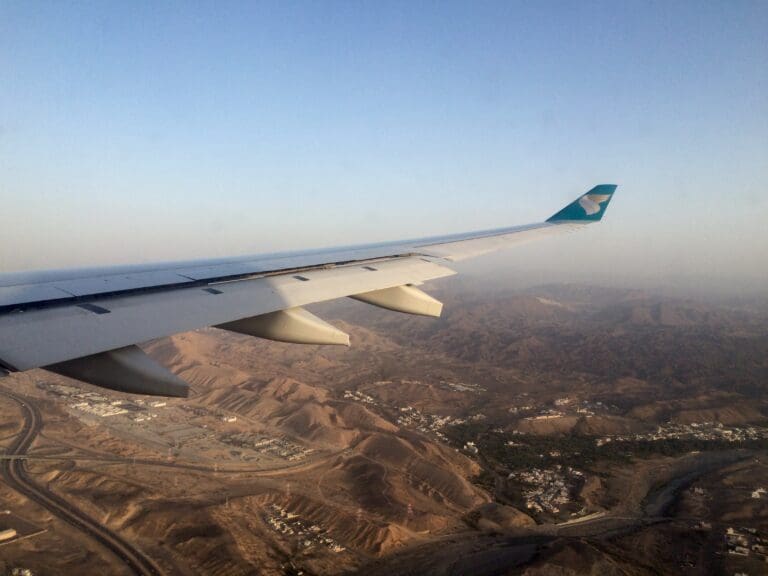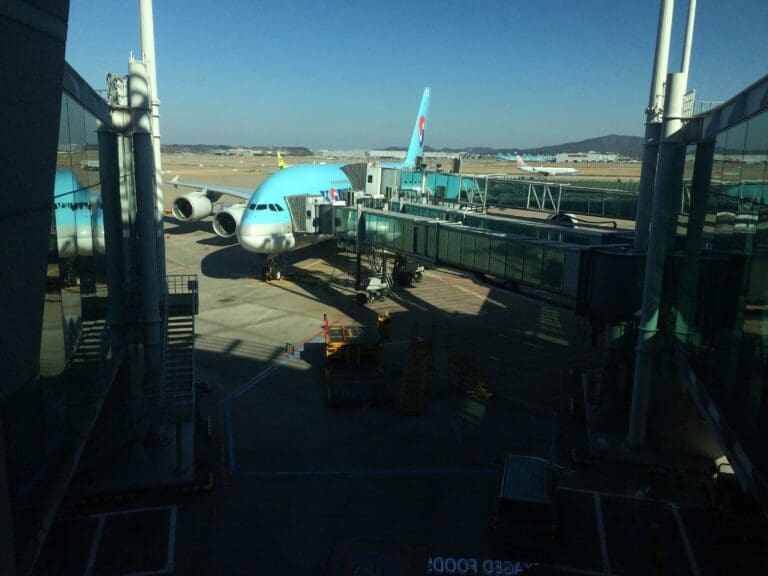Vietnam Airlines Airbus A350 Review: Almost Five Stars From Korea to Vietnam

Disclaimer
This trip took place back in 2017, I have reuploaded this as I have recently moved blogs! Vietnam Airlines continue to fly between Seoul Incheon and Hanoi with the Airbus A350.
Skip to the flight by clicking here!
Background
In the midst of the bitterly cold Korean winter, I naturally turned my attention to the summer break. Initially, my focus was on Japan and Taiwan, both being served by an abundance of cheap flights from Korea. However, I soon discovered that it would not be too much more expensive to fly to Southeast Asia, specifically Malaysia, with particularly cheap tickets offered by low cost carrier AirAsia’s widebody arm, AirAsiaX, and full service carrier Vietnam Airlines. Having visited Malaysia the previous year, I was well aware of the country’s plentiful slights and abundance of good food, often at a very reasonable cost. Thus, considering that I would be travelling on the budget of a poor university student, this seemed to be the best option by far! Whilst the cheap flights to Malaysia would deposit me in Kuala Lumpur, I decided to spend most of the trip in Penang, and thanks to some bargain Malindo Air fares, this would cost me almost nothing! This would see me ride one of the airline’s ATR 72 aircraft from Subang Airport and return to Kuala Lumpur Airport onboard a Boeing 737-800.
As soon as I had made my mind up about the trip, my first task was to book the tickets from Korea to Malaysia. With fares on both AirAsiaX and Vietnam Airlines standing at a similar amount, it didn’t take much for me to opt to fly with the latter carrier given their full service status and the inclusion of complimentary hold luggage. This would see me leave Seoul Incheon Airport on Vietnam Airlines’ morning Airbus A350 operated service to Hanoi. Once there, I would connect on to an Airbus A321 for the slightly shorter ride down to the Malaysian capital where I would arrive in the early evening. The return journey would involve flying on the same combination of aircraft, however, I would leave Malaysia in the evening and arrive in Korea in the morning, making a short stop in Ho Chi Minh City. Having had a reasonable experience flying with Vietnam Airlines on an elongated return routing between Seoul Incheon and London Heathrow in 2016, I was looking forward to sampling the airline again. Whilst I had made the booking via an online Korean travel agency, I was pleased to see that this could be checked through Vietnam Airlines’ website, although due to my ticket class, I was unable to select any seats before the opening of online check-in. With 23 hours to go until the departure of my first flight, I managed to check-in for these without any issues and select window seats for both sectors down to Malaysia.
The Journey
Having packed everything that I would need for my week in Malaysia the day before departure, with little to do, I voyaged out onto Korea’s neon-lit evening streets for a couple of celebratory drinks with some friends in the neighbourhood. Fortunately, things failed to get out of control and by 2300, I was all tucked up and ready to get some sleep. Unfortunately, sleep failed to arrive and after a couple of hours, I turned to my desk to study some subjects that I thought would be boring enough to put anyone to sleep. However, I was wrong and after a few hours I voyaged out for an unhealthy breakfast at my local McDonalds where I opted for a chicken, cheese and tomato sandwich, a dish that has sadly not made it to the comparatively compact breakfast menu at British McDonalds’. Thanks to some drunk students who seemed to be utterly confused and a little annoyed about the fact that they could not order a Big Mac at that time, this took a little longer than usual to order, although I had no complaints about the staff who had been left to deal with these drunk customers!
After returning home, I had a shower and shave before making the final preparations for my departure. Considering that my flight would depart at 1005, whilst still very early, with little else to do I decided to leave my flat at around 0515. As I almost always do, that morning I would catch an all-stop Airport Railroad Express (AREX) train to the airport. However, rather than catching this from the nearest station on its route, given the reasonable weather I opted to walk to Digital Media City station and catch it from there. Eventually, I entered Digital Media City’s large station at around 0600 before tapping in and heading down to the AREX platforms. After a couple of minutes of waiting, an Incheon Airport bound train pulled into the platform and, despite the early hour, this was fairly busy with few places to sit down. Fortunately, it seemed that the majority of passengers disembarked several minutes later at the following two stops – Gimpo Airport and Gyeyang. Heading westwards towards the coastline, I passed the time by utilising the free wifi onboard the train and around forty minutes after leaving Digital Media City, the train arrived at Incheon Airport where its load of sleepy-looking travellers and airport workers piled off and headed up the escalators into the transportation hub.
From the station, nothing more than a short walk is required to reach the terminal’s massive check-in hall, and I arrived there at around 0700. Whilst there were no particularly chaotic scenes in the terminal, at that time in the morning this was rather busy, with a fair mixture of leisure flyers that consisted of Korean tourists both young and old, and couples perhaps heading off to honeymoon in the tropics. Indeed, such demographics were expected given the morning rush of departures to destinations across Southeast Asia.

After checking the departure boards, I leisurely sauntered over to Vietnam Airlines’ check-in area. With Vietnam being a popular holiday destination for Koreans, and given the fairly strong economic ties between Korea and Vietnam, unsurprisingly the Vietnamese national carrier maintains a significant operation in Korea. From Incheon Airport, the airline serves Da Nang, Hanoi, Ho Chi Minh City and Nha Trang, alongside Hanoi and Ho Chi Minh City from Busan. That morning, my flight would be one of two Vietnam Airlines Airbus A350 departures from Incheon, with the other bound for Ho Chi Minh City, whilst an Airbus A321 would be heading off to Da Nang. Despite this trio of flights, the check-in area was reasonably calm and quiet, with no crowds of passengers eager to jet off. Having successfully checked in online, I was able to head straight to the web check-in counter and once there a polite agent printed off my two Vietnam Airlines’ branded boarding passes and sent my small suitcase off into the depths of the airport.
Once I had bid farewell to my bag, I voyaged onwards to one of the terminal’s security checkpoints which, like the others, appeared to have slightly longer queues than normal that morning. However, with no option other than to join one of these, I made my way to the nearest checkpoint and waited in line. Fortunately, this queue moved along quickly and it took no more than ten minutes to reach the front. After a quick yet comprehensive check, I was able to head onward to immigration. Seeing as most passengers were Korean and thus able to use the e-gates, and almost all desks for overseas passport holders were open, I was able to head straight up to a desk and, following a quick scan of my passport, I made my way into the airside area.
As I had expected, the main portion of the terminal, which at that time was home to both Asiana Airlines and Korean Air, was rather busy. There, plenty of transit passengers, many of whom had arrived on services from North America and would be heading onwards to destinations across Asia could be seen milling around waiting for their next flights. Yet, as with the landside portion of the terminal, despite the overall busyness, there were no chaotic scenes and as I wandered around I found the terminal to be in a clean, tidy and overall pleasant state thus leaving me with no complaints.


Before Terminal 2 opened in early 2018, most flights operated by overseas and Korean low cost carriers departed from the satellite terminal, whilst the majority of Asiana Airlines and Korean Air flights departed from the main terminal. Thus, as I had expected, that morning, my flight would depart from the satellite terminal and so I journeyed down the long escalators to the people mover station that sits beneath the main terminal. Following a quick sprint on the driverless people mover, I arrived at the satellite terminal. By this time, I was in need of my second coffee of the day and so I headed to one of the terminal’s cheaper café options, the local branch of Korean chain bakery Paris Baguette.

Once I had polished off my cappuccino, I strolled around the terminal and peered out through the floor-to-ceiling windows at the diverse selection of aircraft outside. As was to be expected, these were a fair mixture of jets operated by Korean low cost carriers such as Eastar Jet, Jeju Air, Jin Air and T’way Air, and a mixture of both low cost and full service carriers from foreign shores, with the largest being a Thai Airways International Boeing 747-400 that had arrived on an overnight flight from Bangkok. Whilst it is always a delight to see the Queen of the Skies, that morning my highlight sighting was a Russian Sukhoi Superjet operated by Yakutia Airlines. This was waiting on a remote stand and would be returned back to its Siberian base in the city of Ulan-Ude, located in the Russian Republic of Buryatia.








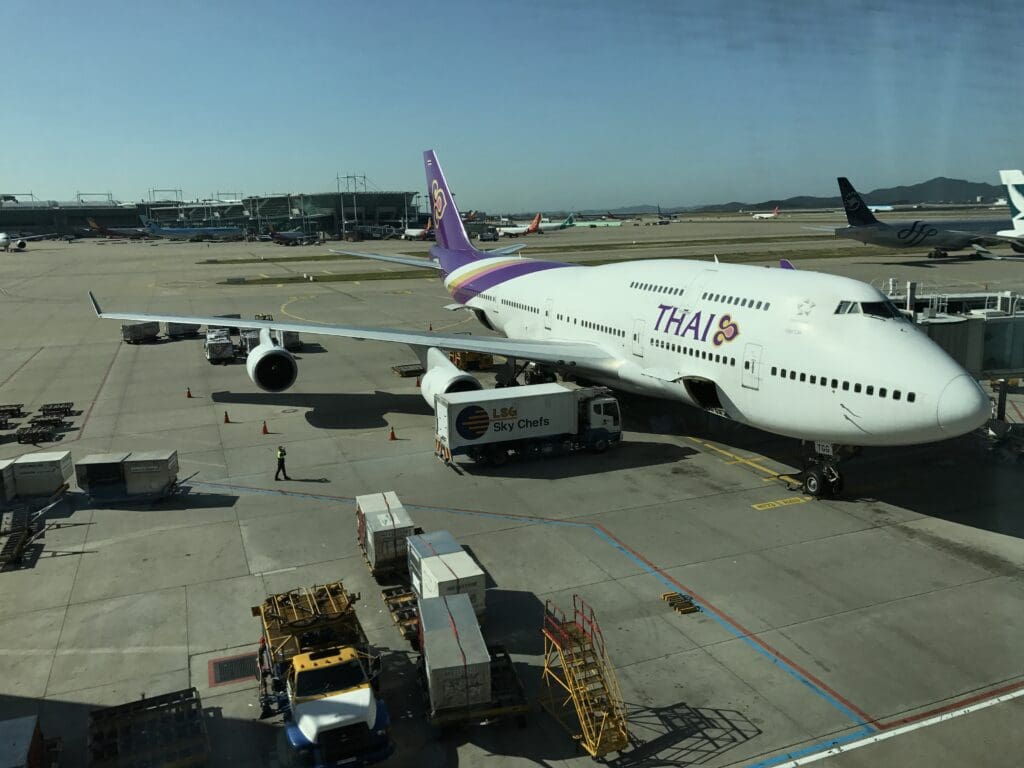
Following my short wander around the satellite terminal, I decided to head to Gate 107 and once there, a fair number of passengers could be seen waiting for boarding to commence. However, at that time, there was no aircraft outside. Having arrived at around 0500, once all passengers had disembarked, this aircraft had been towed over to a remote stand along with Vietnam Airlines’ other two morning arrivals. Whilst I am sure someone must have a good reason for this, these ground movements did seem to be a little illogical given the fact that no aircraft had utilised this gate during that time! Fortunately, several minutes after I arrived at the gate, the sleek looking Airbus A350 was cautiously towed into the gate and once this had come to a halt, jet bridges were attached to the L1 and L2 doors. Inside the terminal, from 0830 the crew began to assemble at the gate, and judging by their shopping bags, quite a few members had clearly had a spree at duty free! That morning, this seemed to be a rather international team, with a non-Vietnamese Captain leading the crew, and a cluster of Korean flight attendants.
That morning, I would have the pleasure of flying onboard Airbus A350-941, VN-A889. As it happened, I had flown this aircraft once before from Incheon to Hanoi around ten months earlier! Like all Airbus A350s, this airliner was assembled at Toulouse and was the seventeenth Airbus A350 to be manufactured. Taking to the skies for the first time in October 2015 with the test registration F-WZFL, this aircraft was 1.59 years old at the time of my flight. This aircraft comes with 305 seats spread out across three classes – 29 in Business, 45 in Premium Economy and 231 in Economy, with this being a fairly standard configuration for an Airbus A350. Delivered to Vietnam Airlines in December 2015, since then the aircraft has been hard at work, connecting Vietnam with destinations across Asia, Australasia and Europe. In the week before my flight, the aircraft had travelled over 40,300 miles, undertaking 19 sectors between Hanoi and Ho Chi Minh City, Paris CDG, Seoul Incheon and Tokyo Haneda.

At 0930, one of the gate agents made an announcement in Korean and English informing passengers that boarding would be delayed due to ‘aircraft preparation’. However, this delay did not last too long and at 0935, boarding commenced with those in Business, elite members of Vietnam Airlines’ Lotusmiles frequent flyer programme and passengers requiring assistance invited to board first, followed by those in Premium Economy. As you would expect, those in Economy were invited to board in accordance with their row, with boarding being undertaken from back to front. Being in the rearmost Economy cabin, it wasn’t long before I was invited to board the aircraft and following a short queue, my boarding pass was scanned and my passport checked before I journeyed down the escalator and headed down the jetbridge towards the L2 door.


Following a very short queue, I stepped into the spacious galley that separates the aircraft’s Business and Premium Economy cabins. At the door, two flight attendants – one from Korea and the other from Vietnam had been tasked with welcoming passengers and checking boarding passes. Following a very warm and friendly greeting from the latter flight attendant and a quick check of my boarding pass, I was directed down the first aisle.
First up on my journey to my seat was the Airbus’ five-row Premium Economy cabin. Whilst I can’t pretend to be any sort of premium connoisseur, this cabin appeared to be atypical of many premium economy cabins across the world. This featured Safran 5810 seats in a 2-4-2 configuration, each of which was covered in green fabric with a subtle pattern and topped with an adjustable headrest that was partially covered by a fabric antimacassar. In this section, two other flight attendants could be seen welcoming passengers and I received another friendly greeting before continuing onwards into the forward Economy section of the aircraft.
In Economy, seats are arranged in an Airbus A350 standard 3-3-3 configuration and took the form of modern and comfortable looking Safran Z300 seats. As with those in Premium Economy, each seat was covered in a smart green fabric that featured a repeating black lotus pattern whilst a fabric antimacassar sporting Vietnam Airlines’ logo covered each seat’s adjustable headrest. Despite being far from unusual in Asia, those more used to four-hour flights in Europe may have been a little surprised to find decent quality blankets and pillows placed on each seat, meanwhile, a package containing typically flimsy and low quality headphones could be found in each seatback pocket.

With little queuing, I soon reached Seat 30A and, seeing as I was yet to be joined by any neighbours, after plonking my luggage down I made a quick pre-departure visit to the lavatory at the rear of the aircraft. In total, there were six lavatories available for those in Economy, equating to a ratio of 39 passengers per lavatory. As one would expect with this being the start of the flight, this was clean, tidy and stocked with the basics. Although somewhat surprisingly given the age of the aircraft, this appeared to be in a slightly worn looking state. After this quick trip, I returned to my seat, sat down and prepared for the flight ahead.


Once seated, I was pleased to find my seat to be comfortable and well-padded, offering a very decent amount of legroom. Importantly, the seat and area around this appeared to be clean and in very good condition, with virtually no signs of wear and tear. Those on longer Airbus A350 services will be happy to hear that each Economy seat comes with its own high quality inflight entertainment screen which can be controlled either via touch or the remote control that is housed beneath this. As passengers made their way onto the aircraft, calming music filled the cabin whilst a montage of photographs from destinations across Vietnam was displayed on the inflight entertainment screens, with these remaining locked until after the safety video had been broadcast. Turning to the seatback pocket this was packed full of items including no fewer than three inflight magazines – specifically, the May 2017 copy of Vietnam Airlines’ bilingual inflight magazine, the Heritage Magazine, a condensed Korean language version of this and the airline’s Heritage Fashion magazine. This was also accompanied by the usual safety card, sick bag and duty-free shopping catalogue.
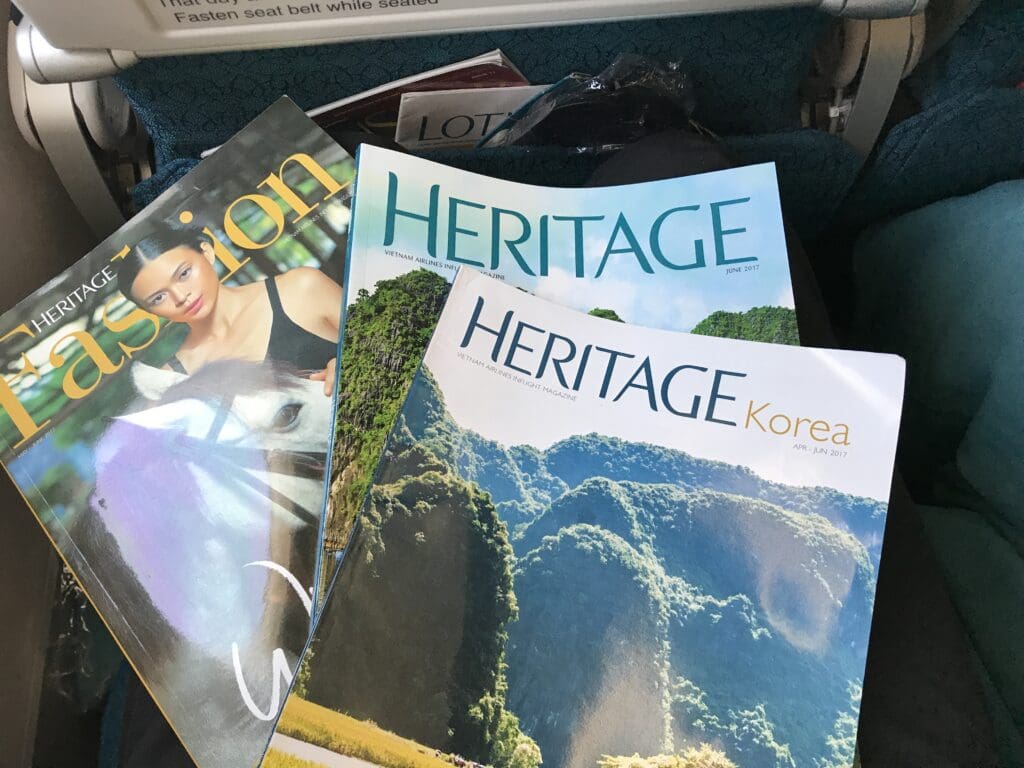


Whilst the flight appeared to be almost entirely full, boarding was completed in around twenty minutes and by 0955 the final passenger had made it onboard. Soon, the cabin doors were closed and looking outside it wasn’t long before the two jet bridges retreated away from the aircraft. Looking around, it seemed that around 90% of passengers in Economy took the form of Korean tourists, and, overhearing conversations, it seemed that many were bound for seaside resorts in the north of the country. Once the cabin doors had been closed and armed, the Purser undertook their welcome speech in Vietnamese and English which contained all the usual welcomes, thanks and warnings, before this was repeated in Korean by another flight attendant. Whilst this was underway, several crew members passed through the cabin ensuring all was secure for our departure. As soon as the series of announcements had come to an end, Vietnam Airlines’ professional and gimmick-free safety video took over the inflight entertainment screens. As this played, the Airbus jolted rearwards and soon, the two massive Rolls-Royce Trent XWB engines quietly hummed and whirred into life ready to power us all southwards to Vietnam.

After a few minutes, the safety video came to an end and was immediately followed by an advertisement for Vietnam’s state-owned bank, Vietinbank. Following this, the inflight entertainment screens displayed a welcome message and could be used by passengers. Once the tug had been disconnected and the engines had safely powered up, the Airbus commenced what seemed to be a fairly slow taxi to Runway 34. During this journey, the aircraft ended up having to pause for a few minutes in order to allow for a T’way Air Boeing 737-800 to pull into a gate, and for Tashkent bound Uzbekistan Airways Boeing 767-300ER to push back. As we made our way to the runway, the cabin crew passed through the cabin handing out packaged wet wipes before strapping themselves into the jumpseats for departure.




Around fifteen minutes after pushing back, the Airbus lumbered onto the runway and without pausing, the two engines spooled up and we commenced our quiet and gentle takeoff roll. Eventually, the Airbus rotated upwards and made a shallow climb into the sunny Korean skies. Looking outside, almost immediately after taking to the skies, the villages of Eulwang and Wangsan could be seen on the western side of Yeongjeong Island, as did a cluster of islands beyond these in the distance.
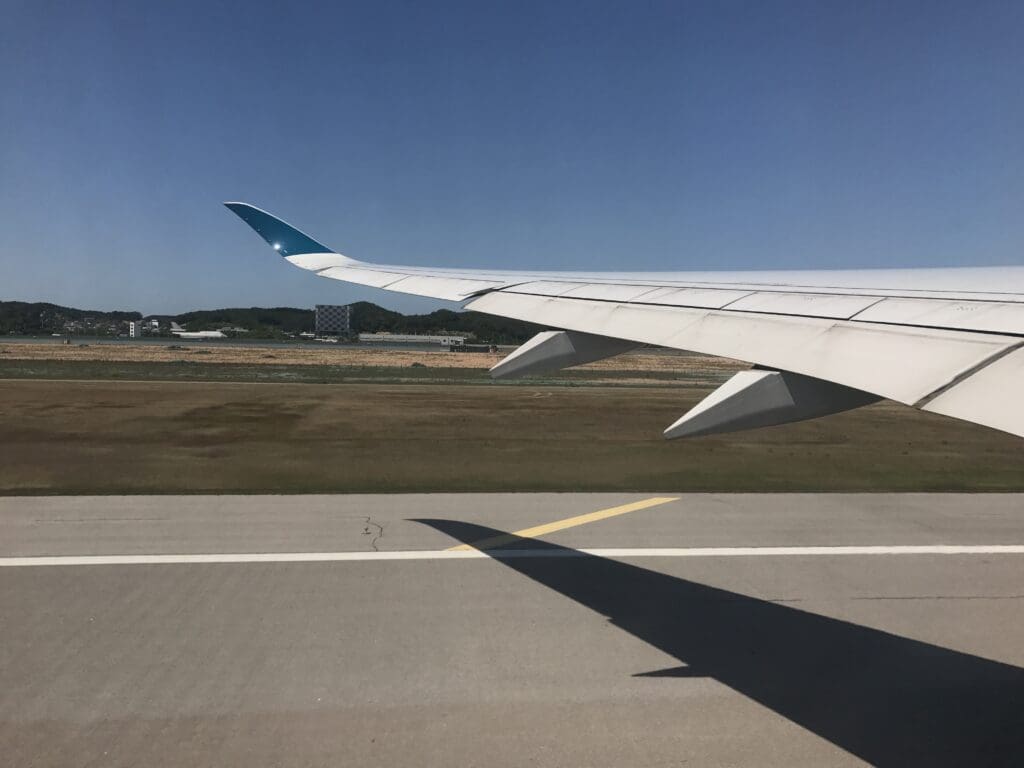

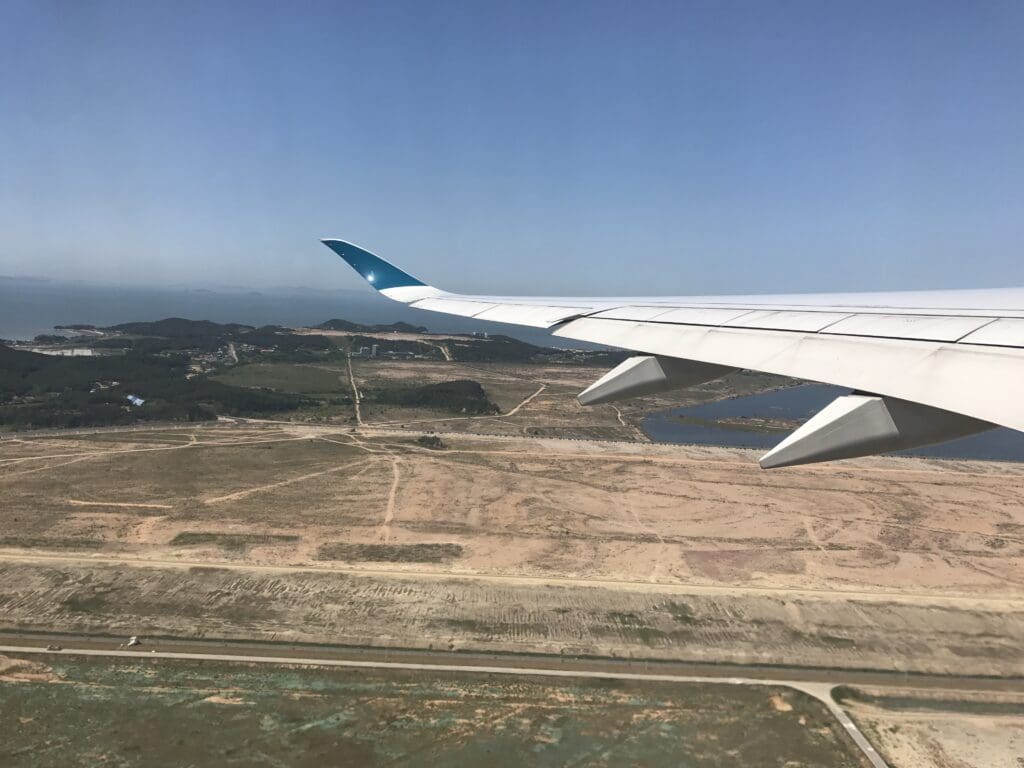
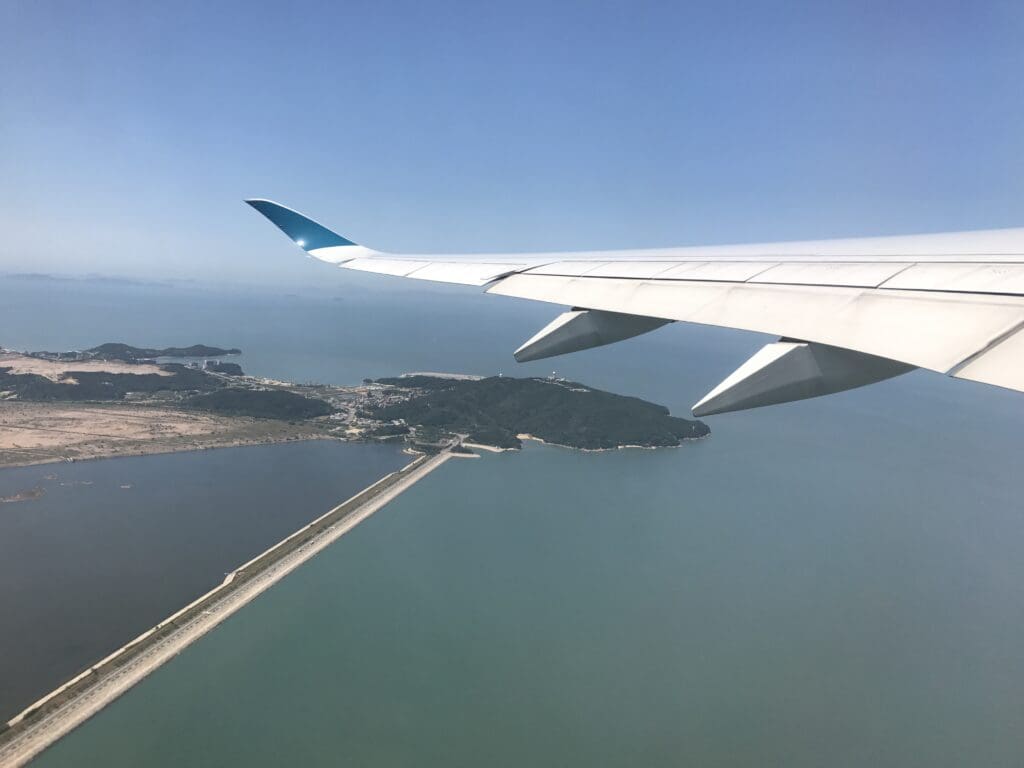
As is the norm when departing into the north from Incheon Airport, a short time after our departure the Airbus banked to the left in order to avoid getting too close to the skies above the Demilitarized Zone. From there, the aircraft flew southwards off Incheon’s western coastline and after a few minutes of flying parallel to this, the aircraft made landfall just to the city of Pyeongtaek and soon crossed from the skies of Gyeonggi Province and into North Chungcheong Province. From there, the aircraft roughly followed the course of the Honam high speed rail line which runs from Seoul to Mokpo in the far southwestern corner of Korea and soon passed Gunsan. This is home to several squadrons of both ROKAF and USAF fighter jets.
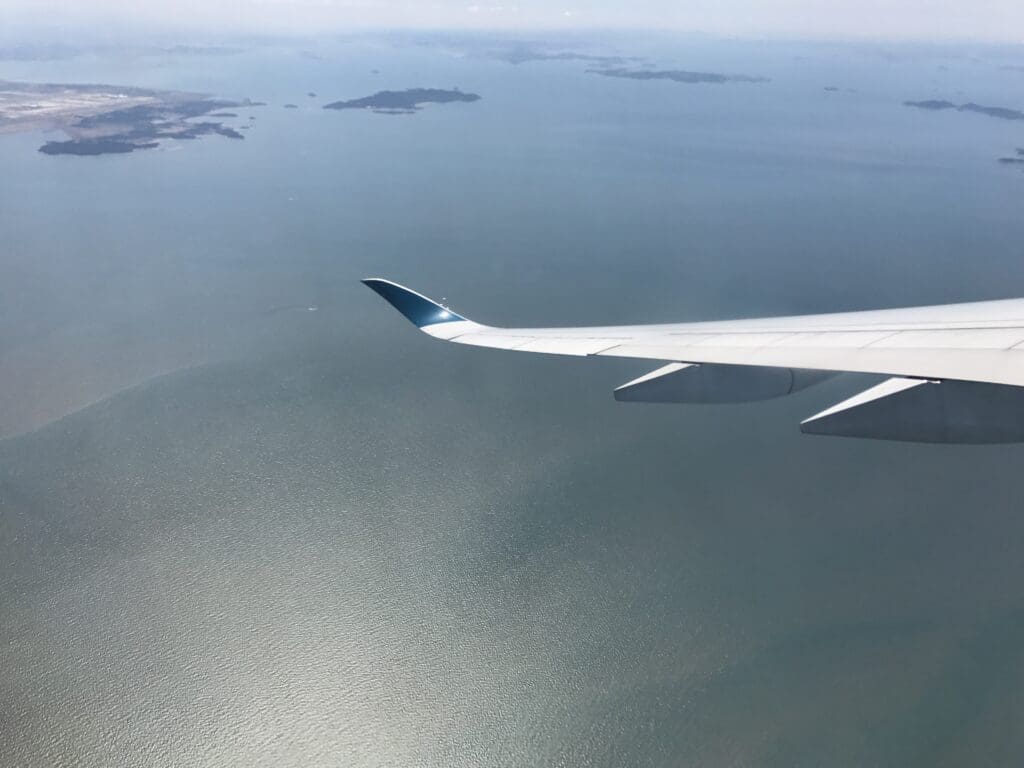


Despite the smooth flying conditions, the seatbelt signs seemed to be kept on for a little longer than usual and were not extinguished until we seemed to be almost at our cruising altitude. Once these had been extinguished, the usual announcement was made advising passengers to keep these fastened whilst seated, before moving on to note that the lunch service would soon commence. As the aircraft passed Korea’s sixth largest city, Gwangju, the crew took to the aisles and commenced the first round of service. This consisted of the distribution of real paper menus, a packet of smoked almonds and a round of drinks. Whilst I was rather impressed by the fact that paper menus were offered on this medium haul flight, the flight attendant responsible for the drinks round in my section of the aircraft conducted this is a rather brash manner. For example, they took requests by simply asking ‘drink?’ and then ‘and you?’ to my neighbours. I opted for a ginger ale and received a full 200ml can of Japanese Suntory ginger ale which, having never seen in Korea, I assume had been loaded in Vietnam.





Turning my attention back outside, by the time I had received my menu, nuts and drink, the aircraft had levelled off at 38,000 feet and vistas of the mainland were slipping away. Almost no time later, the Airbus crossed the island of Jeju, where the clear skies allowed for fantastic views of the entire island. However, sadly, once we had left Korean airspace, clouds rolled in and blocked any views of the world below until we neared Hanoi.




Around twenty minutes after the first service, another flight attendant conducted the main meal service. Unlike the first flight attendant, I found that they were polite and friendly, although they did conduct this service in a slightly rushed manner. Having browsed the options, I opted for the spicy pork dish over the beef ragout. This was handed to me on a tray containing a small salad, a piece of carrot cake and a warm bread roll alongside a plastic packet of butter. This also came with another wet wipe, a sachet containing plastic cutlery, a serviette and the usual packets of salt and pepper, alongside a glass tumbler featuring Vietnam Airlines’ lotus motif and a plastic mug. Whilst this meal was far from the most plentiful offering that I have ever been served, it was most definitely sufficient for an early lunch and I was very pleased with the quality of the delicious main dish. Around twenty minutes after this had been handed out, a round of teas and coffees was undertaken and, a little over half an hour after the meal service commenced, the crew passed through the cabin collecting passengers’ trays.


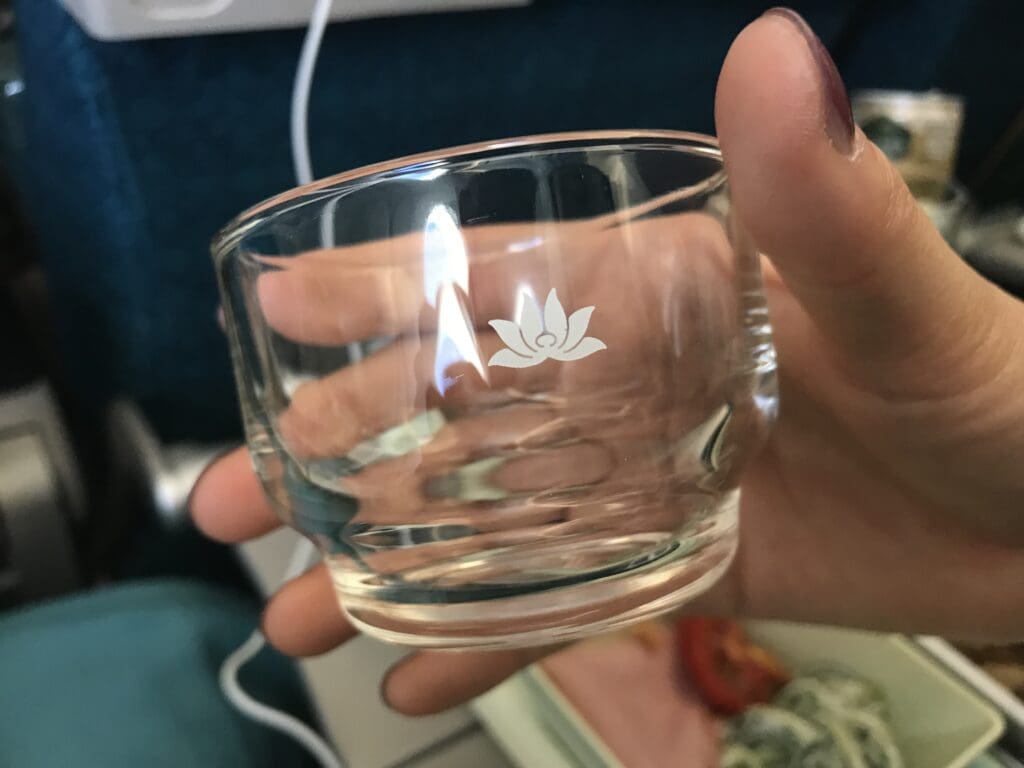
Immediately after the collection of the trays, a duty-free service was undertaken, although most passengers seemed disinterested in this, allowing the crew to speed through the cabin before retreating to the galleys. Cruising southwards, the aircraft soon reached Shanghai, at which point the aircraft shook a little resulting in the temporary reillumination of the seatbelt signs. Fortunately, this patch of turbulence lasted no longer than fifteen minutes and before I knew it the seatbelt signs were extinguished once again.


Around half way into the flight, the cabin lights were dimmed and the crew passed around requesting passengers close their window shades. Given that this was a relatively short daytime flight, combined with the fact that most passengers were awake, I thought this to be a little odd; however, with little to see outside, I could not complain about this and followed the crew’s instructions. At this point in the flight, I decided to explore the delights of Vietnam Airlines’ inflight entertainment system. Starting with the basics, this was available in eight Asian and European languages, was modern and well laid out, and was quick to load. In terms of content, this featured 63 films, the majority of which were either from the United States or Vietnam. However, a small number of Japanese and Korean films were also available to watch. For those fancying a shorter watch, 50 television programmes were available, and finally, 150 Asian and Western albums and 10 games could be found on the system. Overall, whilst this system was not quite as expansive as the likes of say the ME3, this still left me with absolutely no complaints and was ultimately a fairly good system.
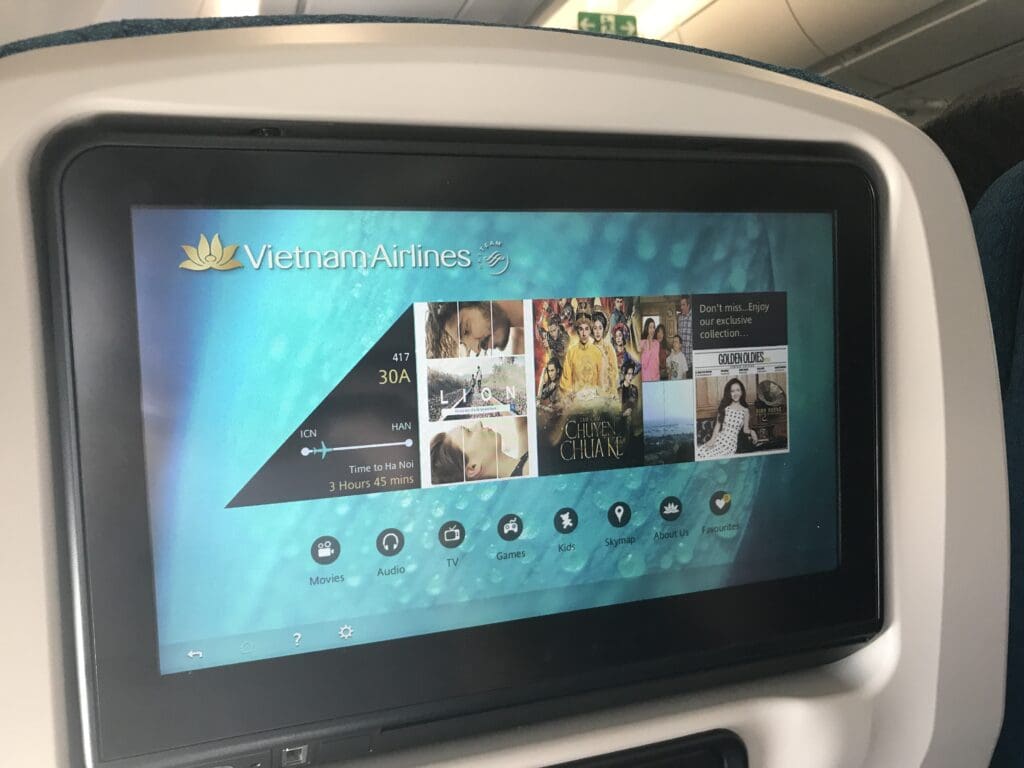
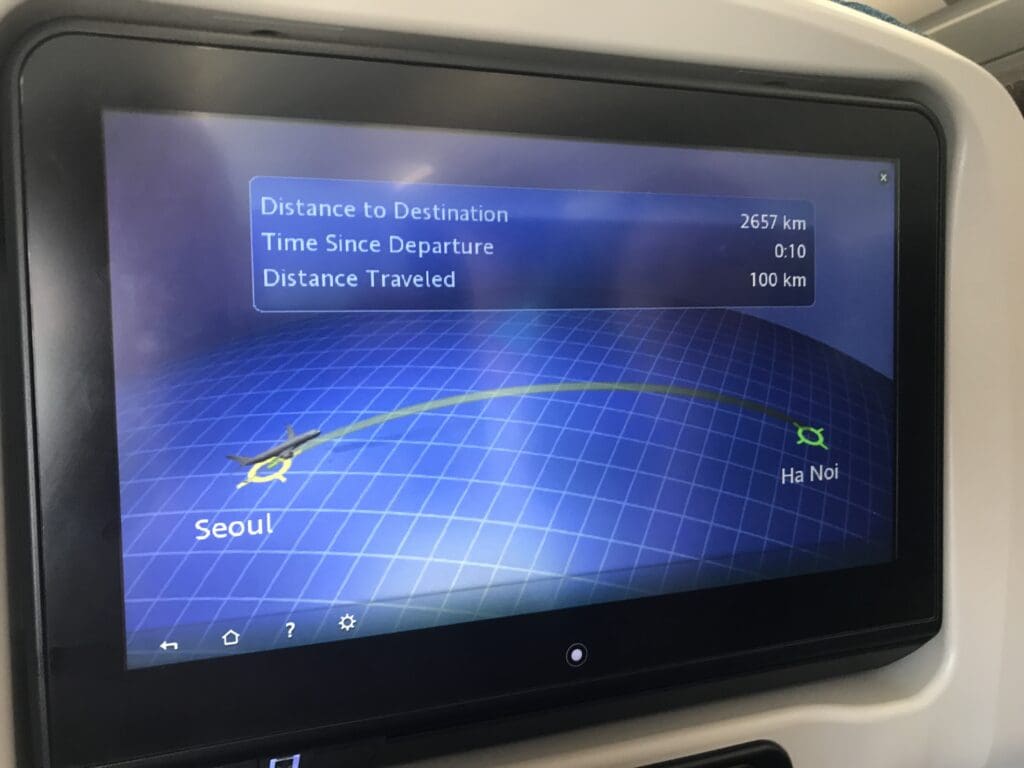

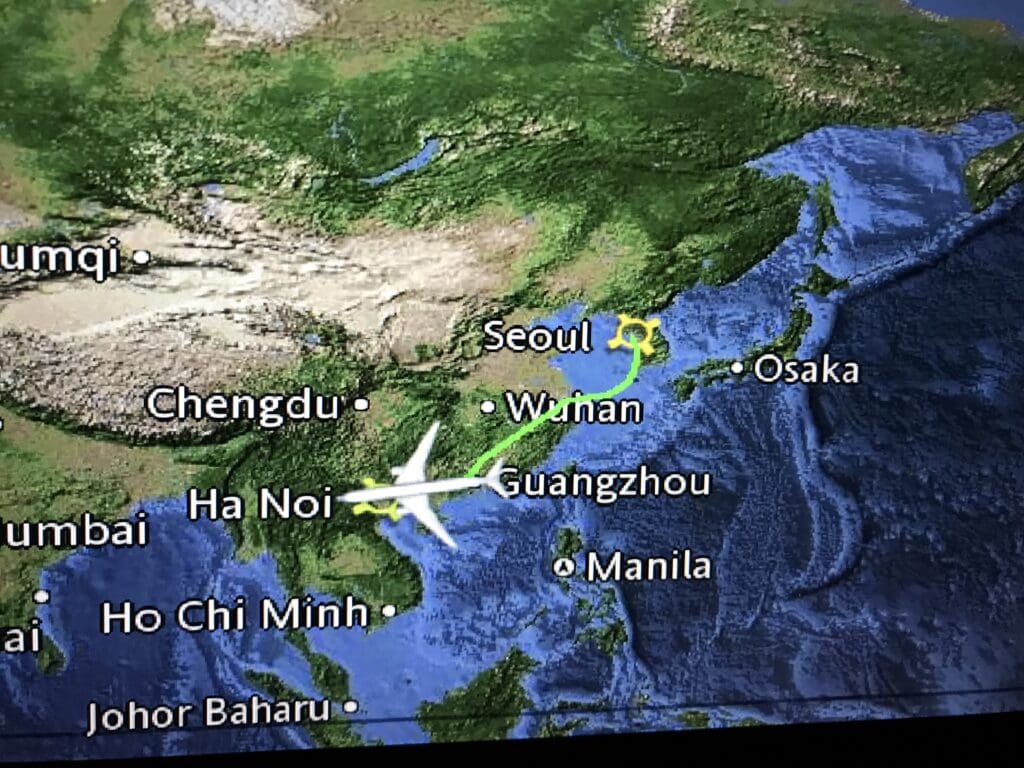
Cruising southwards over China’s eastern fringes, it wasn’t long before the aircraft reached Guangzhou at which point the Airbus could be felt climbing once more, settling at 40,000 feet for thirty minutes before heading back down to 34,000 feet. Feeling a little weary following my restless night and early start, I had a short nap and upon waking up, we did not have any great distance left to run until our arrival into Vietnam. With that considered, I decided to make a pre-arrival trip to the bathroom. Opting to visit a different lavatory, I was fairly surprised to see that this was in a fairly terrible state as if these had not been checked once since departure. As I walked back to my seat, one of the crew members conducted their pre-descent announcement warning that the seat belt signs would soon be reilluminated. After passing over the Guangxi city of Nanning, the aircraft proceeded into Vietnamese airspace at which point the aircraft could be felt commencing its return to earth. By this time, the clouds beneath the aircraft had largely cleared resulting in good views of the hilly and mostly rural landscape passing by beneath the aircraft.




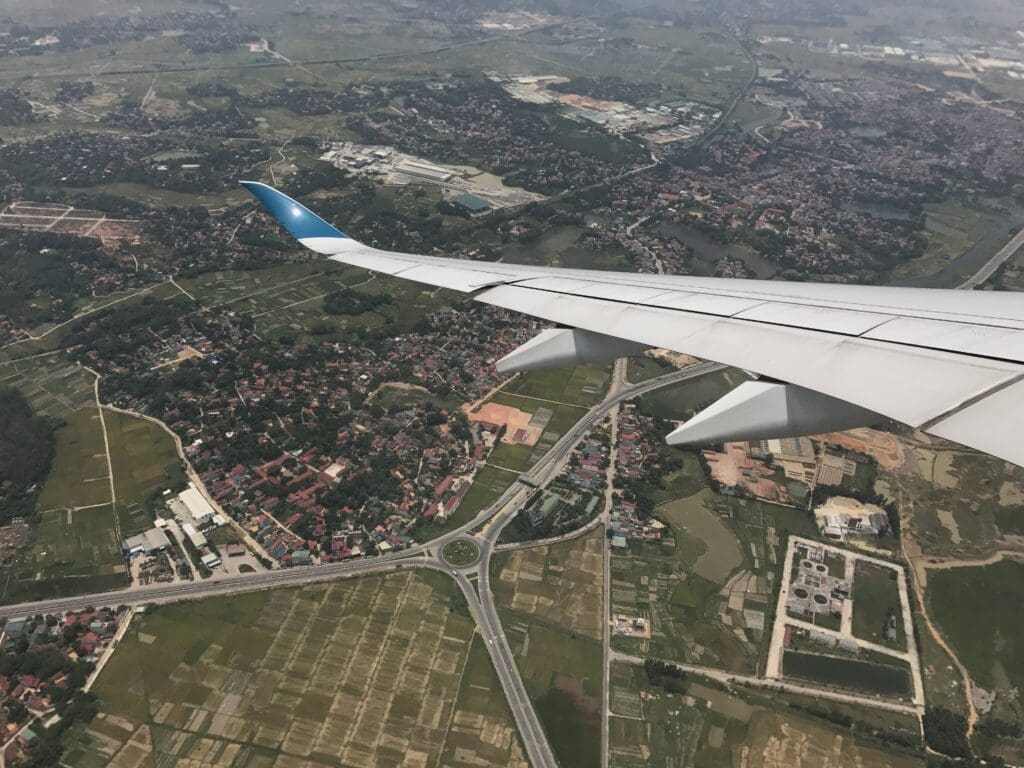
As the aircraft headed towards Hanoi, the countryside transformed into industrial and urban landscapes as we reached the city of Thai Nguyen and the areas of Song Cong and Vinh Yen. As the aircraft made several turns, the crew passed through the cabin ensuring all was secure for landing.



Eventually, the flaps and landing gear were both extended as the aircraft made a smooth approach over a mixture of fields and towns towards Hanoi’s Runway 11R. Almost four hours after leaving Incheon, the aircraft made a soft touchdown on Vietnamese soil as a Jetstar Pacific Airbus A320 commenced its take-off roll on the parallel runway at the start of its journey to Ho Chi Minh City. Once the aircraft was firmly on the ground, we decelerated with quite some vigour and the hangars and shelters that belong to the local air force squadron who operate the rare Sukhou Su-22 could be seen on the opposite side of the airfield. This was soon followed by two interesting visitors, a mammoth Antonov Airlines Antonov An-124 and a slightly smaller Volga-Dnepr Ilyushin Il-76.


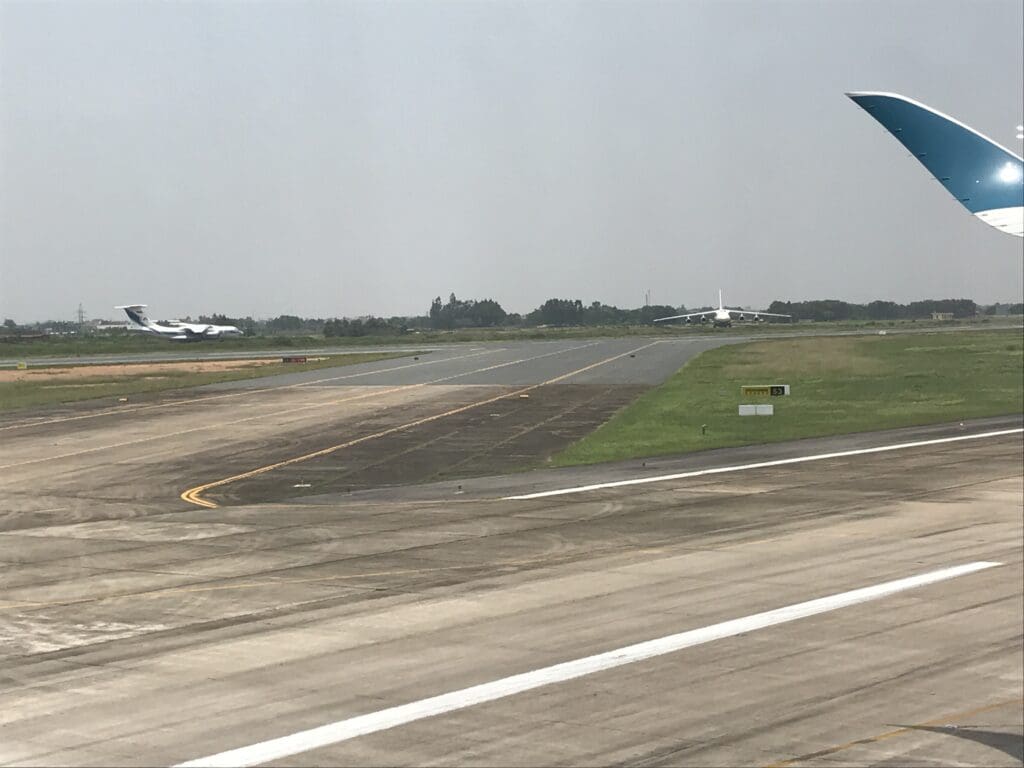
Vacating the runway to the left, inside the cabin a trilingual welcome and thank you announcement rang out, during which passengers were informed of the hot 37 degree local temperatures which resulted in several audible ‘aaahs’ being heard as we headed over to the gate. Outside, Vietnam Airlines’ maintenance area could be seen before passing the domestic terminal where a host of Jetstar Pacific, VietJet and Vietnam Airlines Airbus A320 family aircraft could be seen being readied for their next missions across the country.

A few short minutes after landing, the aircraft pulled into Gate 37, joining a host of Vietnam Airlines aircraft and several visitors from abroad. These included two Airbus A330s that had also recently arrived from Incheon operated by Asiana Airlines and Korean Air, a couple of Boeing 737-800s from Bangkok and Kuala Lumpur operated by Thai Lion Air and Malindo Air respectively and a Singapore Airlines Boeing 777-200ER.

Once the aircraft came to a halt, the seatbelt signs were extinguished and the engines spooled down. Thankfully, there was no mad rush to escape the aircraft, nor any major pushing or shoving and so disembarkation was a relatively calm affair. Eventually, I left my seat and made my way down the aircraft, thanking several crew members during this journey before stepping off the aircraft and heading up into the terminal. From the gate, it was a short walk to the arrivals hall where, following signs for transit passengers, I had my boarding pass and passport checked before being allowed to pass through security and enter the airport’s departure area.


The Other Flights
After a pleasant transit in Hanoi, my flight to Kuala Lumpur was delayed by over an hour, with this operated by a rather old but clean Airbus A321 that had been retrofitted with thin, firm and uncomfortable seats. However, the shorter leg from Kuala Lumpur to Ho Chi Minh City during my return trip was operated by a much more comfortable and newer Airbus A321. On both legs, meat and seafood options were offered and the meal came in the exact same format as on the Incheon to Hanoi flight, although no menus were offered. In terms of the crew, I found those working the next leg of my trip to Kuala Lumpur to be friendlier than on the flight down from Incheon, although on the return legs, the crew seemed to be somewhat unfriendly on both flights.
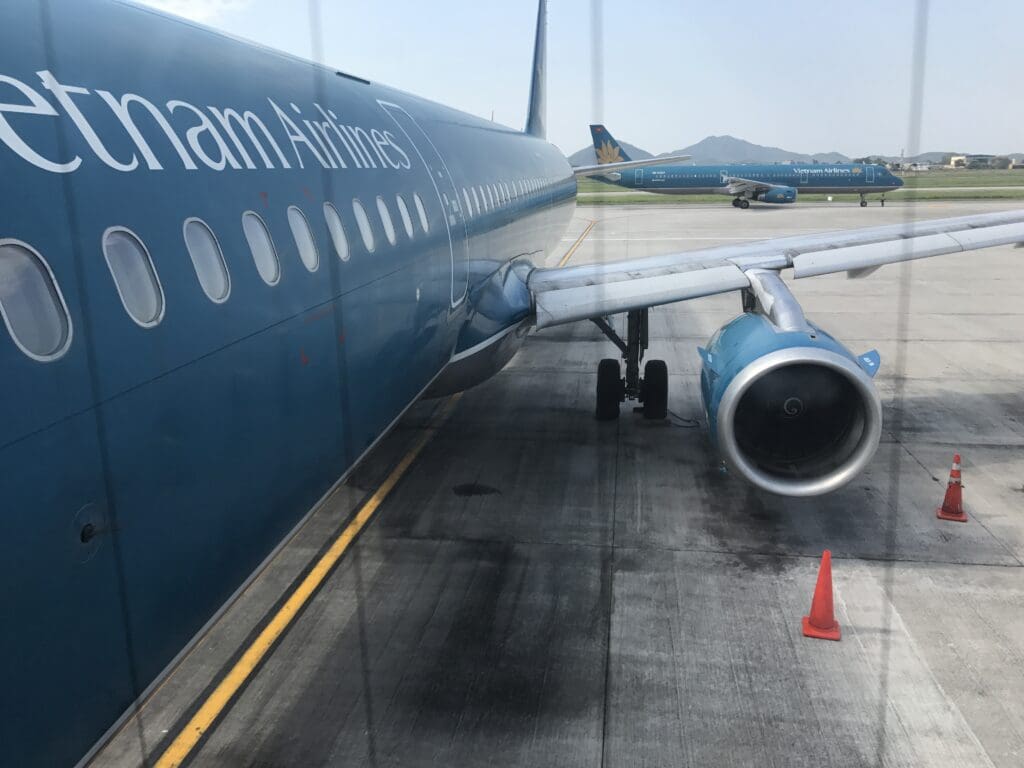

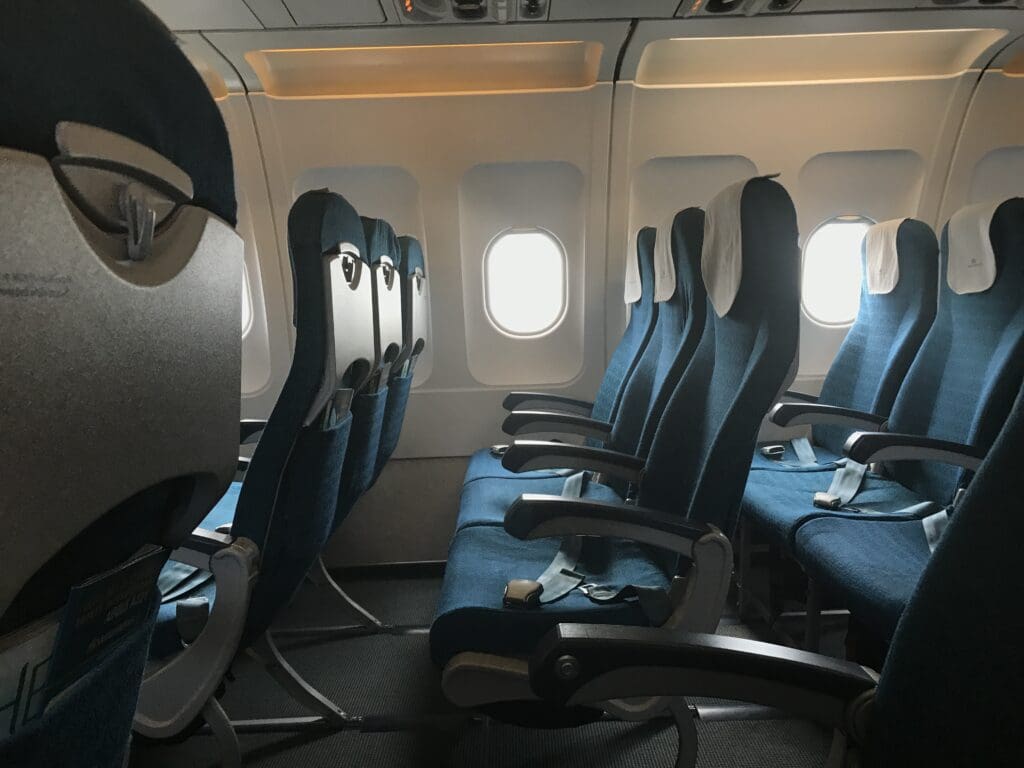
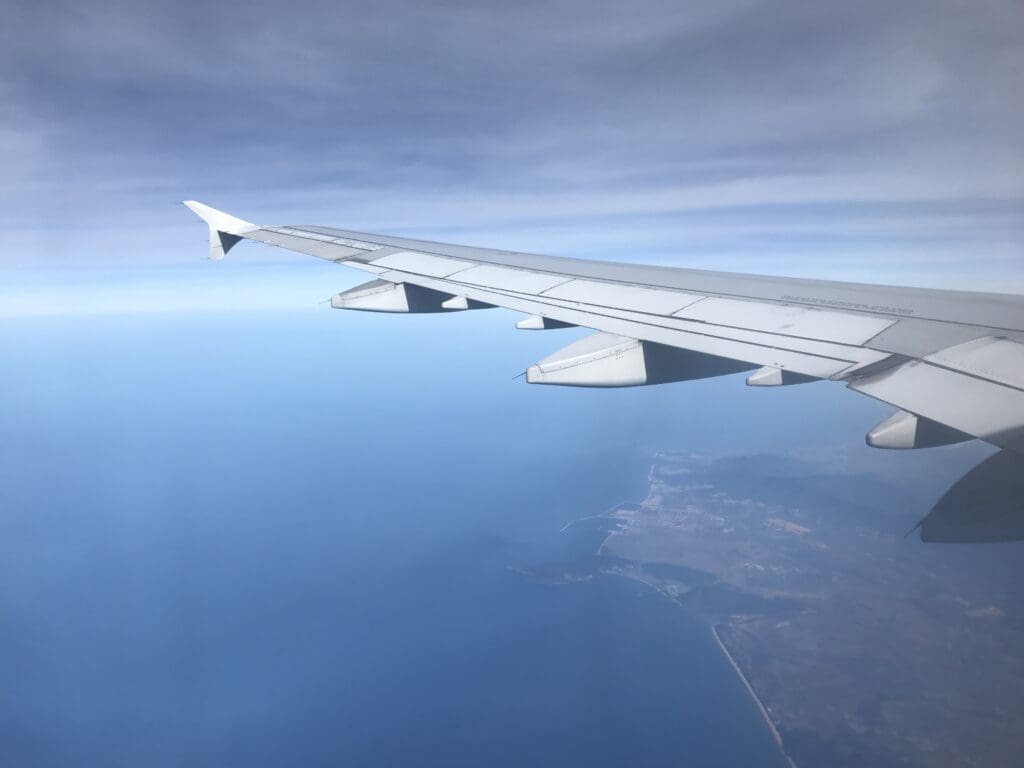


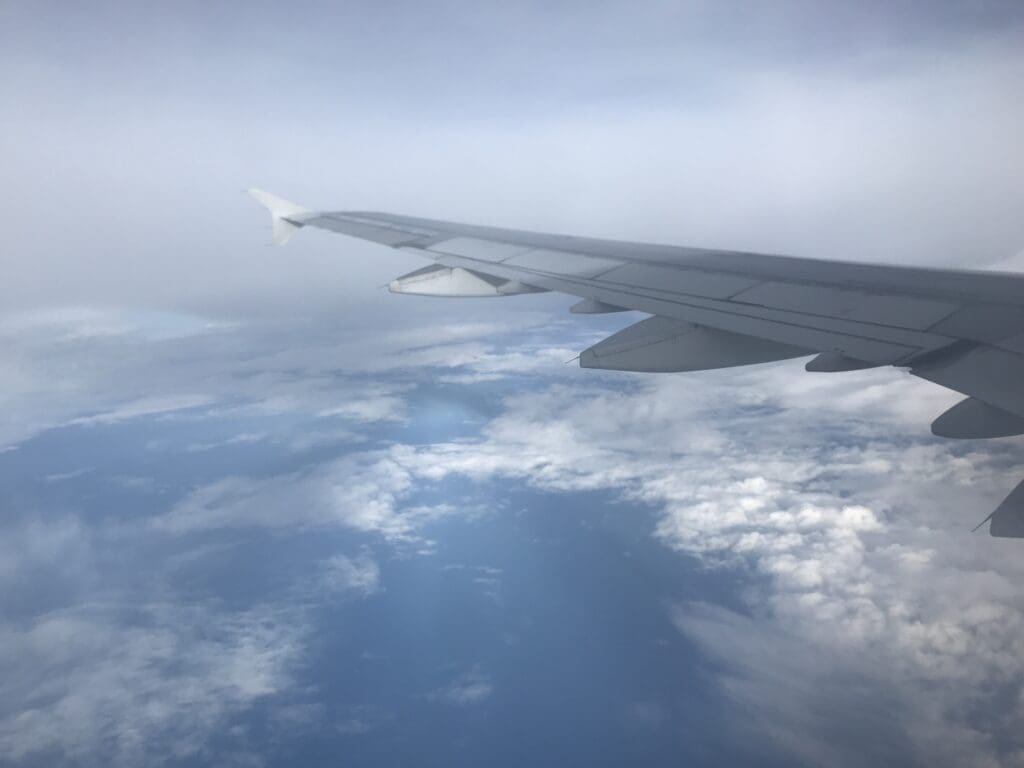



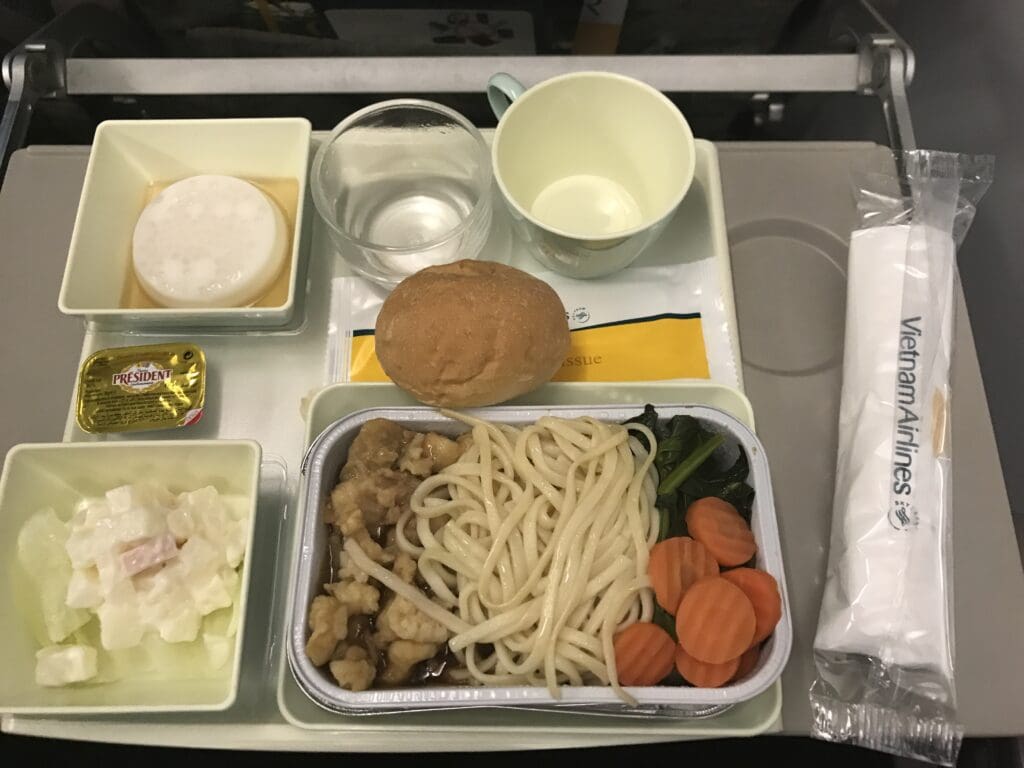


Summary
Good food, real paper menus, proper blankets, thick pillows and real glassware – all things that you may not expect to find in Economy on a medium haul flight! Needless to say, there were quite a few things about Vietnam Airlines that left me with a very positive impression and it was clear that Vietnam Airlines has the very real potential to become a world class airline. Not to mention the fact that my itinerary down to Malaysia and back came with a very reasonable price tag.
However, my now eight legs on the airline have not been unilaterally fantastic and I have also experienced cool and unfriendly crew, chaotic ground arrangements and unexplained delays. Thus, there are definitely a few kinks that need to be ironed out to enable the airline to progress upwards through the ranks. Nevertheless, if the price was right, I would most certainly consider flying with Vietnam Airlines again in the future.

